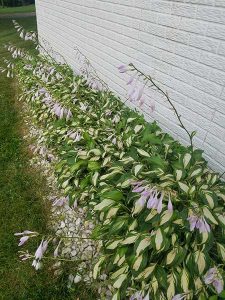DIY Homemade Deer Repellent – How to Make and Use Your Own
One of the things we hear often from people in the Northern Virginia area is how frustrated they are with trying to keep the deer population from eating their plants. The money, time, and effort that goes into a garden can evaporate overnight with a single visit from a herd of hungry deer.
 Deer are beautiful animals, but their numbers have exploded throughout the Fairfax, Loudoun and other counties. Especially in the rural west, which means homeowners almost everywhere are struggling to keep deer from using their ornamental gardens as a salad bar. Commercial deer repellents can get pretty pricey and many folks are cautious about the chemicals they may be spraying around their outdoor living space.
Deer are beautiful animals, but their numbers have exploded throughout the Fairfax, Loudoun and other counties. Especially in the rural west, which means homeowners almost everywhere are struggling to keep deer from using their ornamental gardens as a salad bar. Commercial deer repellents can get pretty pricey and many folks are cautious about the chemicals they may be spraying around their outdoor living space.
We’ve heard from a few people that they have had good experience with a homemade, organic deer repellent using ingredients from their own refrigerator. The Hosta garden photo on the right was taken a few weeks ago. The owner hasn’t seen flowers – and few leaves– on the plants in over 5 years due to the deer. Faithful, weekly treatments of the deer repellent have been rewarded with beautiful blooms and healthy plants.
The trick to making and applying your own repellent is to commit to mixing up a new batch and applying it every week. If there has been a lot of rain—such as we have had lately—you should probably apply the repellent sooner rather than later. Basically, the repellent will train the deer to leave your plants alone altogether.
The yogurt and egg solids help the mixture cling to the plant leaves and flowers even through gentle rain showers. The garlic and cayenne pepper are pungent enough to ward off the hungriest deer. It even helps guard against other destructive critters, including rabbits, skunks, and groundhogs.
The homemade deer repellent is an inexpensive, all-natural solution that when used faithfully will keep Bambi and his buddies away! The recipe is below if you want to give it a try. You’ll need a garden sprayer, large spray bottle, or watering can. We’ve heard the watering can is easiest to use as cleanup is quick and it doesn’t get clogged as easily as the sprayer or bottle.
Deer Repellent Ingredients:
– Warm water (1 gallon)
– Raw eggs (3)
– Milk or yogurt (3 tablespoons)
– Crushed garlic cloves (3)
– Cayenne pepper (3 tablespoons)
– Blender
– Strainer
Step 1
Put eggs, milk or yogurt, garlic, and cayenne pepper along with two to three cups of water into a blender, and puree thoroughly. Strain that mixture into a gallon jug, add the remaining water and seal.
Step 2
While the homemade deer repellent can be used immediately, it will be more potent if left to ripen at room temperature for 24 hours. Yes, it will be stinky! Transfer to garden sprayer or spray bottle.
Step 3
Spray plants liberally after morning dew or any rainfall has fully dried. Make sure to spray the entire plant, leaves, stems, fruits, and all. Don’t worry, it won’t harm your foliage, just make it smell and taste bad to foraging deer. Milk products contain a sticky protein called casein to help the homemade deer repellent cling. Once dry, the odor will be undetectable to humans but still unpleasant to ruminants. And should any stubborn invaders go beyond a sniff to a taste, that cayenne pepper will deliver a burning warning sure to turn them off!
Step 4
The sticky homemade deer repellent could clog your spray dispenser, so after dosing your garden, pour any remaining mixture back into the jug for storage in the garage or a cabinet. As the eggs and milk continue to rot, it will get even more potent!
Step 5
Reapply the homemade deer repellent weekly and after any rainfall. Ideally, you’d begin spraying early in the growing season once the weather warms up in March and April. During this time, deer are establishing their feeding patterns and your plants are breaking winter dormancy. If you make your yard unappetizing to them from the get-go, they’ll find more hospitable grazing ground and may steer clear of your place.
Source: All of the Outdoor Design and DIY Tips from BobVila.com
